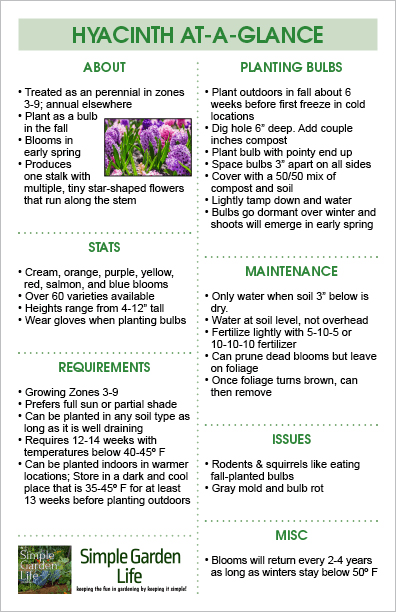Knowing how to grow hyacinth bulbs is a great way to add beauty and sweet fragrance to your garden spaces. Whether you plant them in containers or directly in the soil, they are a great addition and companion to other spring-blooming flowers.
Hyacinth plants produce one spiky, upright bloom each year. The blooms feature multiple tiny star-shaped flowers that run along the top of the stem. And when they unfurl, they are a beauty to behold!
With almost every color possible, hyacinth flowers add great visual interest to flowerbeds, containers, landscape borders and garden areas. Especially when combined with other spring-blooming flowers.
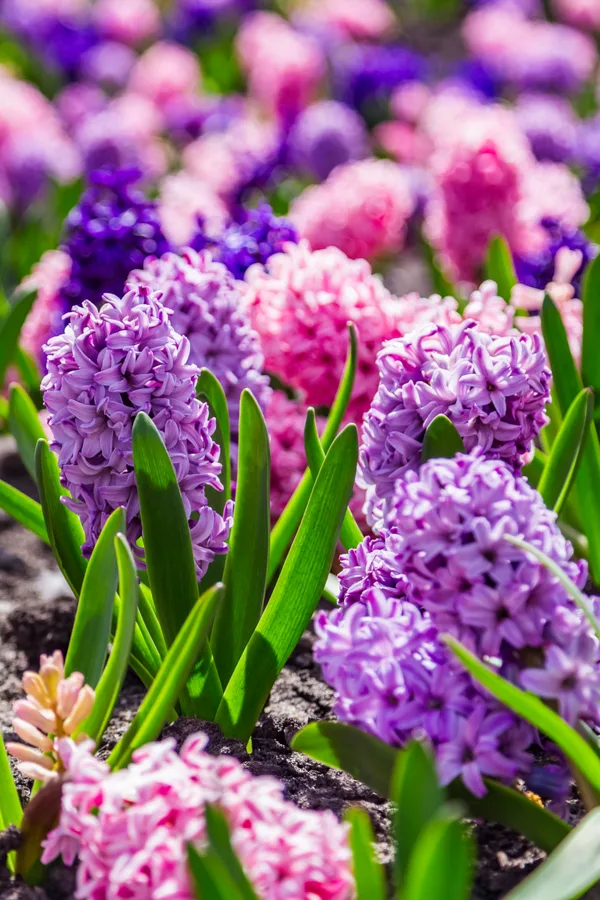
Not only are they beautiful to look at, but hyacinth blooms put off an amazing aroma. And the more bulbs you plant together, the stronger the scent will be.
Hyacinth flowers have a hardiness growing zone of 3-9 and need to have the cold winters in order to chill and bloom in the spring. You can find your own USDA Plant Hardiness Growing Zone Here.
This flowering perennial bulb can reward you with beautiful blooms for 2 to 4 years if they are planted properly and well maintained. Some gardeners, however, prefer to plant bulbs as annuals to make sure they have strong blooms every spring.
Varieties of Hyacinths – How To Grow Hyacinth
There are about 60 different varieties available to gardeners. Most hyacinth varieties range in size from 4 to 12 inches tall. Their smaller size makes them perfect for planting next to your tulips or in front of taller flowers like allium.
Their bloom colors can range from cream, orange, purple, yellow, red, salmon, and even blue, so there is definitely a color perfect for every garden design or landscape area!
How To Plant, Grow, And Maintain Hyacinth
Soil Requirements for Hyacinth Bulbs
Although hyacinth bulbs will grow in most soil types, the soil must be well-draining. Moisture is an enemy for these bulbs. If your soil happens to be thick and heavy, make sure you amend it with compost to help keep the soil loose and well draining. You can even mix in a bit of sand with the compost to help promote better drainage.
Another alternative is to plant hyacinth bulbs in raised beds or containers. These growing substrates are a bit easier to fill with great soil and better drainage.
Planting Hyacinth Bulbs
Hyacinth bulbs require 12 to 14 weeks with temperatures below 40-45º Fahrenheit (4-7º Celsius) in order to chill and survive. Because of this, hyacinth bulbs need to be planted in the fall about 6 weeks before your location’s first hard freeze. (You can find that date by visiting Here).
If your location has mild winters that won’t reach those temperatures for extended periods, then can also pre-chill bulbs in your refrigerator before planting in the spring (more on this later).
Important Note Before Handling Bulbs
If you are planting large quantities of hyacinth bulbs, you may want to consider wearing gloves. The bulbs produce oxalic acid, which can cause contact dermatitis with prolonged exposure to bare skin.
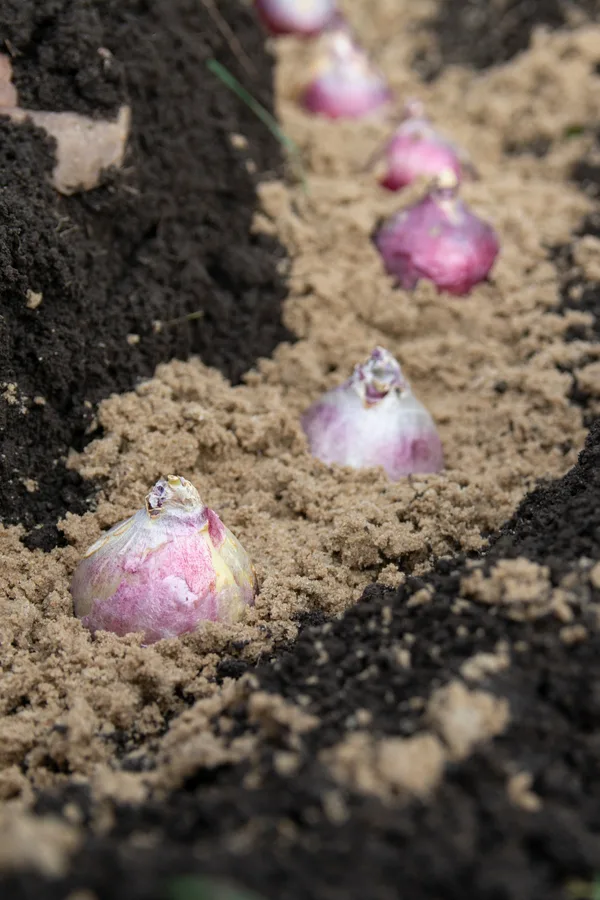
Planting Bulbs In The Fall
As long as your winters stay cold, you can directly plant bulbs into the soil in the fall. Choose a location that receives full sun or at least partial shade. Again, make sure the soil drains well.
Dig a hole in the soil that is around 6 inches deep for each bulb. You can use a post hole digger or bulb auger to make quick work of creating these holes. You can also make a large trench if you are planting several bulbs in a row.
Space bulbs around 3 inches apart in all directions to allow enough space for plants to grow and develop fully.
Before planting, add a few inches of compost to the bottom of each hole. Place the bulbs in with the pointy end up at a depth of about 4 inches below the soil line. Back fill with a 50/50 percent mixture of soil and compost. Lightly tamp down the soil and water well.
You may choose to add a couple of inches of mulch in order to keep weeds at bay, but that is completely optional.
For Warmer Locations
You can choose to force hyacinth bulbs into bloom if your winter temperatures do not drop low enough or if you want to display bulbs indoors.
Choose a container with good drainage holes and fill with a multi-purpose potting mix. Place bulbs with just the tip showing (pointy end up) about 3 inches apart if planting in groups.
Place the container in a dark location with temperatures between 35º and 45º Fahrenheit (0-7º Celsius). Don’t let the temperatures go below freezing though. Bulbs need to stay in this cooler location for at least 13 weeks. There will be some shoot growth, but it will be minimal.
Once the shoots are around 1 to 2 inches long, slowly start to increase the temperature and lighting. Moving containers to a location that receives indirect sunlight works well for a few days. Then, move plants to a location with direct sunlight.
Water sparingly so the soil is moistened but not saturated. Once hyacinths have started to flower, you can transplant them to the garden so they can continue to bloom or you can keep them indoors.
Bulbs that are forced into bloom are typically treated as annuals at this point and will only bloom for one year.
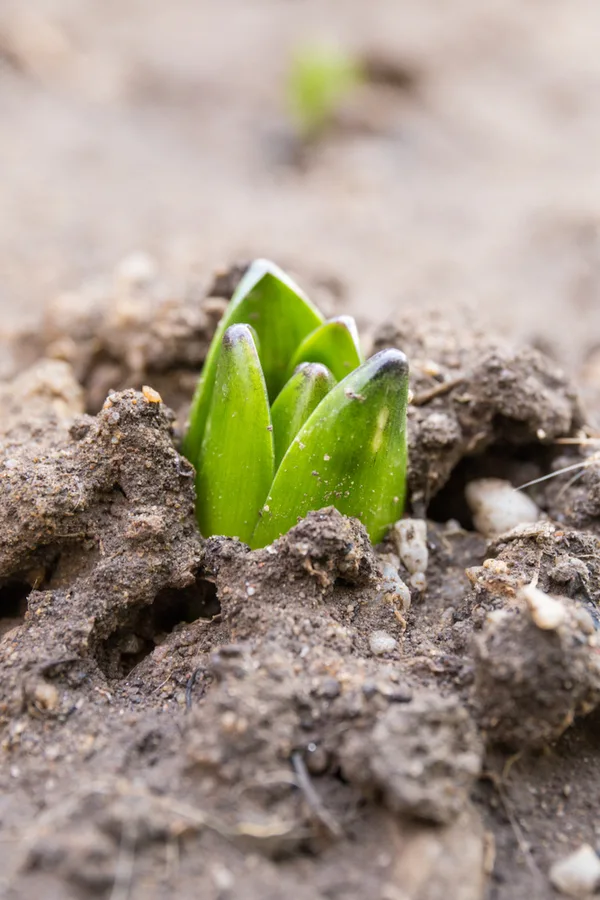
Long-Term Care – How To Grow And Maintain Hyacinth
There is nothing you need to do during the winter to care for hyacinth bulbs. As long as they were planted deep enough, the bulbs will go dormant and stay protected in freezing temperatures.
When early spring arrives, the shoots will start to poke through the soil as the weather warms.
Watering
Water very sparingly in the spring. Only apply water if the soil is dry 3 inches below the surface. Avoid watering overhead with a sprayer or sprinkler. Instead, water at the base of the plants or use a drip hose at the soil level.
Fertilizing
You can fertilize lightly with a dose of 5-10-5 or 10-10-10 fertilizer to help nurture blooming. There are also commercial fertilizers specific for hyacinth bulbs that you can use.
Pests & Issues
The main issue for hyacinth bulbs in the fall is squirrels and rodents digging up the bulbs. In addition, hyacinth bulbs are prone to gray mold and bulb rot if the soil remains wet for too long. Make sure you plant in a location with well-draining soil since that is pertinent to the health of your hyacinth plants. (See : How To Protect Bulbs From Squirrels & Chipmunks)
Pruning
Once the blooms begin to fade in late spring, you can prune the dead blooms back if you like. Just make sure to leave the remaining foliage on the plant to allow it to provide nutrients to the bulbs for the next year. After the foliage dies off and turns brown naturally, you can then cut it back completely.
Bulbs can remain in the ground as long as your winter temperatures drop below 50º Fahrenheit (10º Celsius). These bulbs should return to bloom for an additional 1 to 3 years. If you do not have cold winters, remove the bulbs to store in a cool, dry location for a few months before replanting in the fall.
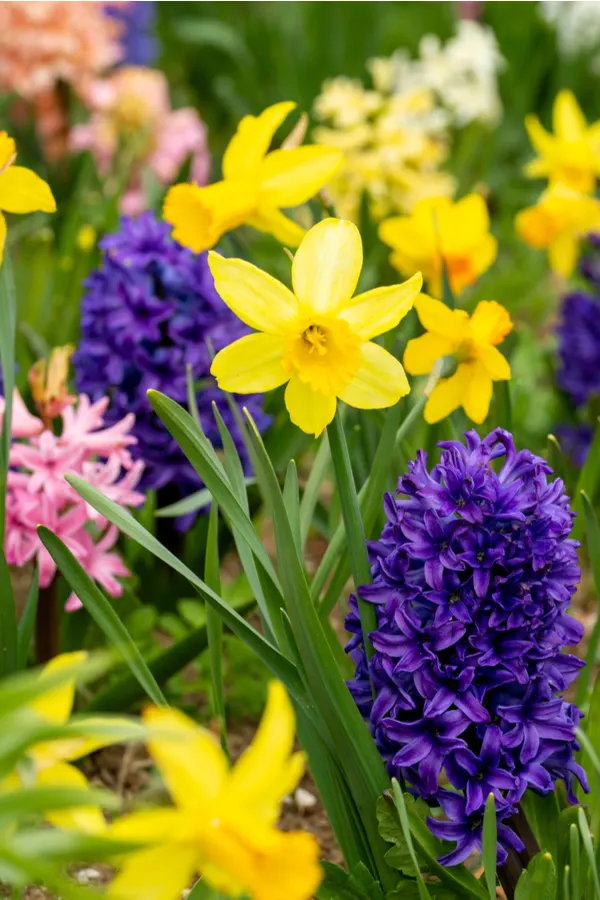
To Conclude…
When planted in large groups, hyacinth flowers will not only add beauty and interest but they will also add a wonderful fragrance to your surroundings. And, with proper care and maintenance, they will reward you with those colorful spiky blooms for multiple years!
Feel free to download, print out, or save our Hyacinth At-A-Glance sheet. It is sized for half letter printing but can be scaled if needed.
